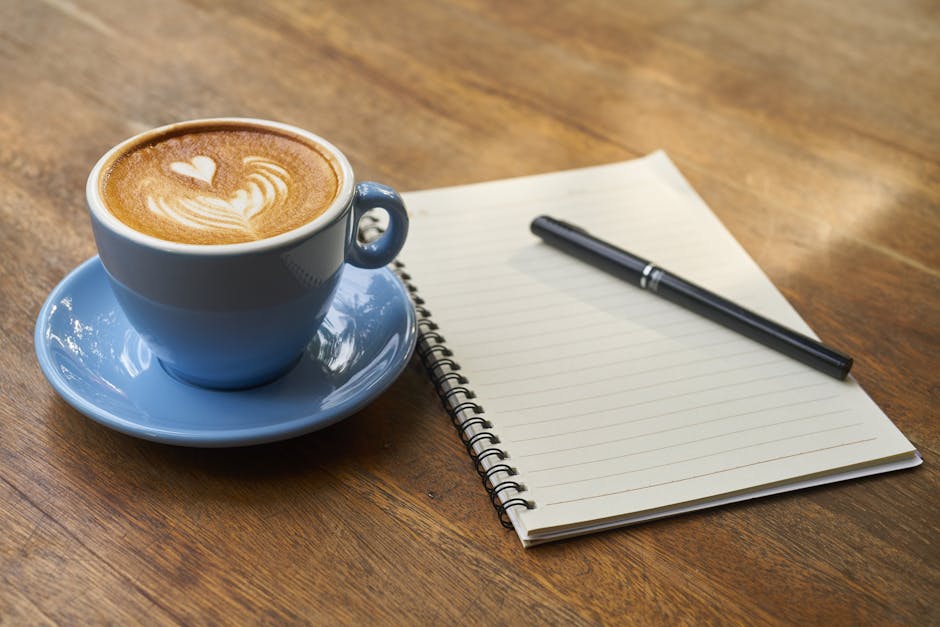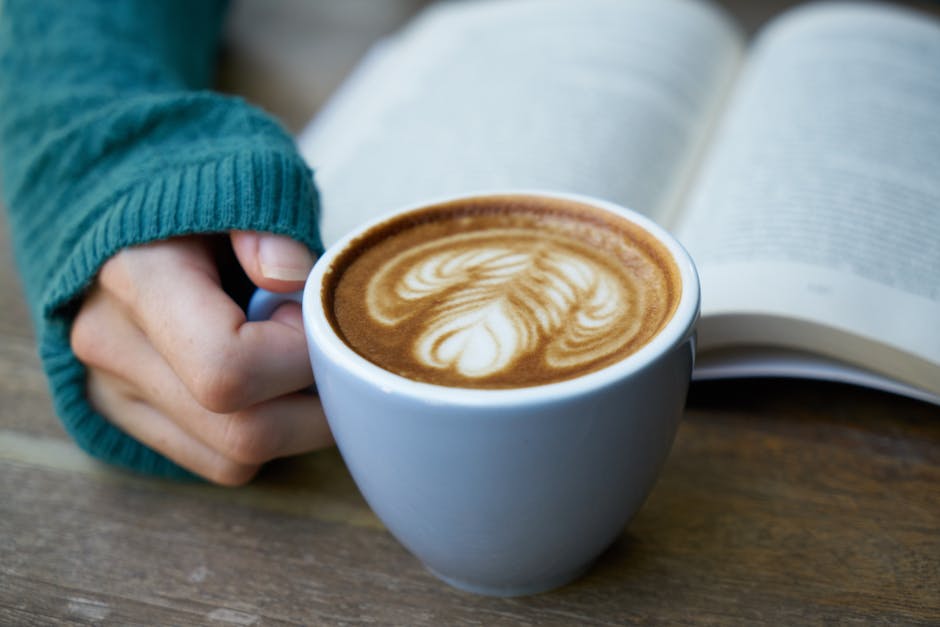Coffee lovers across the globe appreciate a well-made cappuccino for its smooth and creamy texture, combined with the perfect balance of rich espresso and velvety steamed milk. Whether you're a coffee shop owner looking to elevate your menu, or simply someone who wants to enjoy a luxurious cup of cappuccino in the comfort of your own home, mastering the art of making the perfect cappuccino is a skill worth honing.
But what exactly is a cappuccino? A cappuccino is a classic Italian coffee-based drink that consists of three fundamental elements: espresso, steamed milk, and foam. Interestingly, the name "cappuccino" is derived from the resemblance of its color and frothy top to the brown hoods worn by Capuchin friars, a religious order in Italy. Though it may seem simple, creating the ideal cappuccino requires precision, attention to detail, and a few insider tips that we are about to share.
In this blog post, we will guide you step by step through the process of making the perfect cappuccino. From choosing the right coffee beans, grinding them to perfection, and extracting a well-balanced shot of espresso, to steaming the milk to the ideal temperature and creating that luscious foam, we've got you covered.
Whether you're a novice starting out or a seasoned barista looking to refine your skills, this comprehensive guide will provide you with all the information and techniques you need to achieve cappuccino perfection. So, grab your favorite mug, prepare your taste buds, and let's embark on this remarkable journey to create the most exquisite cappuccino you've ever tasted.
Grinding the coffee beans to the right consistency

Grinding the coffee beans to the right consistency is an essential step in making a perfect cappuccino. The key is to find the sweet spot between a fine and coarse grind that allows for optimal extraction of flavors.
A consistent and uniform grind size is crucial for achieving a balanced and flavorful cup of coffee. If the beans are ground too fine, the water will struggle to pass through, resulting in a bitter and over-extracted taste. On the other hand, grinding the beans too coarsely will yield a weak and under-extracted brew with lackluster flavors.
To find the perfect grind consistency for your cappuccino, it is recommended to invest in a quality burr grinder rather than using pre-ground coffee. Burr grinders provide more control over grind size, ensuring an even and precise result every time.
Start by adjusting the grinder to a medium setting and then make small increments in either direction, testing the resulting grind each time. The ideal cappuccino grind should resemble granulated sugar or slightly coarser to the touch.
Keep in mind that the grind size may vary depending on the type of coffee beans you are using, as well as personal preference. Generally, darker roasted beans require a slightly coarser grind, while lighter roasted beans may benefit from a finer grind.
Remember to always grind your coffee beans just before brewing to preserve the freshness and flavors. Grinding too far in advance can lead to a loss of aroma and taste.
By finding the perfect grind consistency, you are setting the foundation for a delightful and professionally crafted cappuccino. The right grind allows for the optimum extraction of flavors, ensuring a rich and smooth coffee experience. So, take the time to experiment with different grind sizes until you find the sweet spot that satisfies your taste buds and elevates your cappuccino-making skills.
Measuring the right coffee-to-water ratio

Measuring the right coffee-to-water ratio (experiment to find what works best for you):
When it comes to making the perfect cup of cappuccino, one of the key elements to master is the coffee-to-water ratio. Getting this ratio right is essential in order to achieve the perfect balance of flavors and achieve that professional taste. While there are general guidelines to follow, it's important to remember that personal preferences may vary, so don't be afraid to experiment until you find what works best for you.
To begin, you'll need to determine the ratio that suits your taste buds. Typically, a good starting point is to use a ratio of 1:2, meaning one part coffee to two parts water. This can give you a strong, flavorful cup of cappuccino. However, if you prefer a milder taste or find the coffee too intense, you can adjust the ratio accordingly.
When measuring the coffee, it's crucial to use a kitchen scale or measuring spoon to ensure accuracy. Start by measuring out the desired amount of coffee grounds. Remember, the type of coffee beans and their grind size will also affect the intensity of your cappuccino, so consider these factors as well.
Next, you'll need to determine the right amount of water to use. It's best to measure the water by weight to maintain consistency. We recommend using filtered or spring water for the best flavor. You can pour the water into a measuring cup or directly into your coffee maker, depending on your brewing method.
Once you have measured the coffee and water, it's time to combine the two. If you are using a drip coffee maker, follow the manufacturer's instructions for the water reservoir, making sure to add the correct amount of coffee grounds to the filter. For manual methods such as a French press or pour-over, you can add the coffee grounds to your preferred brewing device and then pour the water over them.
Now it's time for the fun part: experimenting with different ratios to find the perfect balance for your taste. If you prefer a stronger cappuccino, you can increase the coffee-to-water ratio, adding more coffee grounds or reducing the amount of water used. Conversely, if you want a milder cup, you can decrease the coffee-to-water ratio, using fewer grounds or more water.
Remember, making the perfect cappuccino is a personal journey, and there's no one-size-fits-all ratio. It's all about finding the right balance that suits your palate. So, don't be afraid to explore and experiment with different ratios until you discover your ideal coffee-to-water measurement. With some practice and patience, you'll be able to create a professional-grade cappuccino that will impress even the most discerning coffee connoisseur.
Selecting the right espresso machine

Investing in a high-quality espresso machine is crucial when aiming to make the perfect cappuccino. While there are several options available in the market, selecting the right espresso machine can make a significant difference in the taste and consistency of your cappuccino.
Firstly, consider opting for an espresso machine that is specifically designed for commercial purposes. These machines are designed to handle heavy usage, ensuring a consistent quality of espresso shots. While they may involve a higher upfront cost, they are built to last and deliver an exceptional brewing experience.
Secondly, pay close attention to the features and specifications of the espresso machine. Look for key elements such as the boiler capacity, pressure settings, and temperature control. The boiler capacity determines how many cups of espresso can be brewed at a time, while the pressure settings and temperature control allow for precise adjustments to achieve the perfect extraction.
Furthermore, consider the machine's pump system. The pump is responsible for maintaining a stable pressure level throughout the brewing process, resulting in a well-balanced and flavorful espresso. Look for machines with commercial-grade pumps to ensure optimal performance and consistency.
Additionally, it is essential to choose an espresso machine that offers a steam wand or frothing arm. This feature enables you to create the velvety microfoam required for a traditional cappuccino. A machine with an adjustable wand can provide greater control over steaming and frothing, allowing you to achieve the desired texture and thickness of the milk foam.
Lastly, prioritize durability and ease of maintenance. Look for machines with stainless steel or high-quality metal components that are built to withstand regular usage and are easy to clean. Regular maintenance and cleaning routines are vital to ensure the longevity and optimal performance of your espresso machine.
Remember, selecting the right espresso machine is an investment that can enhance the overall coffee experience and help you consistently create the perfect cappuccino. By choosing a high-quality machine with the necessary features, you can elevate your cappuccino-making skills and impress your customers or guests with a professionally crafted cup of this beloved Italian beverage.
Preheating the machine and the cup

To achieve the perfect cappuccino, it is crucial to start with preheating both the machine and the cup. This step ensures that the final result stays hot for a longer period, allowing you to fully savor the flavors and aromas of your carefully crafted cappuccino.
Begin by turning on your espresso machine and giving it some time to warm up. This will ensure that the water reaches the ideal temperature for brewing a rich and flavorful espresso shot. While the machine is preheating, take a moment to prepare your cup.
Select a ceramic or glass cup specifically designed for cappuccinos. These types of cups typically have thicker walls, which help to retain heat better than thinner options. Place your chosen cup on the cup warmer of the espresso machine if it has one, or simply rinse it with hot water to warm it up.
By preheating the cup, you create an environment that is conducive to maintaining the desired temperature of your cappuccino. This step also helps to prevent any unnecessary heat loss once the hot espresso comes into contact with the cup.
Remember, temperature plays a significant role in the overall enjoyment of a cappuccino. When the cup is not preheated, the hot espresso can rapidly cool down, resulting in a lukewarm and less pleasurable beverage. Preheating ensures that every sip remains delightfully warm and enjoyable until the last drop.
Taking the time to preheat both the machine and the cup may seem like a small detail, but it can make a significant difference in the quality of your cappuccino. It ensures that you experience the full depth of flavors and the comforting warmth that this classic coffee beverage has to offer.
Frothing the milk properly (bubbles should be creamy and not overly foamy)

One of the most important elements in making the perfect cappuccino is frothing the milk properly. The texture and consistency of the milk can make or break the overall taste and presentation of your cappuccino. When frothing the milk, it is crucial to aim for creamy bubbles rather than overly foamy ones.
To begin, start by selecting a stainless steel milk frothing pitcher that can comfortably hold the amount of milk you need for your cappuccino. Pour the desired amount of cold milk into the pitcher, ensuring that it is fresh and of high quality for the best results.
Next, place the steam wand of your espresso machine just below the surface of the milk. Position it at an angle so that it creates a swirling motion within the pitcher. This will help incorporate air into the milk and create a creamy consistency.
Turn on the steam wand and gradually increase the pressure, aiming for a gentle hissing sound. Too much pressure can create large, airy bubbles that will not give you the desired velvety texture. The goal is to create a creamy microfoam that will provide a smooth mouthfeel.
As the milk begins to froth and expand, remember to constantly monitor the temperature. The ideal temperature for frothed milk is around 150°F (65°C). Going beyond this temperature can scorch the milk and result in a less-than-pleasant taste.
Once the milk reaches the desired temperature, turn off the steam wand and remove the pitcher from the heat. Give the pitcher a gentle tap on the counter to disperse any larger bubbles that may have formed during the frothing process.
Lastly, give the pitcher a vigorous swirl to integrate the frothed milk and the remaining liquid milk. This will ensure a uniform consistency throughout the cappuccino.
Remember, practice makes perfect when it comes to frothing milk for cappuccinos. It may take a few attempts to find the right balance of pressure, angle, and time to achieve the creamy texture you desire. With patience and attention to detail, you'll soon be able to create the perfect cappuccino with a beautifully frothed milk topping that impresses both your taste buds and your guests.
Positioning the steam wand correctly in the milk pitcher (angle and depth matter)

Positioning the steam wand correctly in the milk pitcher is a crucial step in making the perfect cappuccino. The angle and depth at which you place the wand can significantly impact the texture and consistency of the milk froth.
To begin, ensure that the steam wand is pointing slightly off-center in the milk pitcher. This angle allows for optimal swirling and creates a whirlpool effect, resulting in a smooth and velvety microfoam. Avoid pointing the wand directly at the milk's surface, as this can create large bubbles and a froth that lacks creaminess.
As you position the steam wand, consider the depth at which it is submerged in the milk. The goal is to have the tip of the wand just below the surface, approximately 1/4 inch deep. This depth allows for adequate steam to be injected into the milk while maintaining control and preventing the milk from overheating or scorching.
Keep in mind that the size of the milk pitcher also plays a role in positioning the steam wand. For smaller pitchers, you may need to adjust the angle and depth accordingly to achieve the desired milk texture.
During the steaming process, pay close attention to the sound and appearance of the milk. If you hear a loud hissing noise, the wand may be too close to the surface, and if you hear a gurgling sound, the wand may be too deep. Adjust accordingly to achieve a soft, steady hissing sound, indicating that the steam is being properly incorporated into the milk.
Experiment with different angles and depths to find the ideal positioning that works best for you. Practice and patience are key in mastering this technique and creating a velvety, creamy froth for your cappuccinos. Remember, a well-textured milk foam enhances the overall taste and presentation of your cappuccino, making it a delightful experience for both your taste buds and your customers.
Achieving the right temperature for the milk (around 150°F to achieve optimal taste)

Achieving the right temperature for the milk is crucial when making the perfect cappuccino. The ideal temperature for milk is around 150°F, as it helps to create the creamy and velvety texture that makes a cappuccino so enjoyable.
To achieve the ideal milk temperature, it is recommended to use a thermometer specifically designed for milk frothing. Start by pouring the desired amount of cold milk into a metal frothing pitcher. The metal pitcher helps retain heat, ensuring the milk heats evenly throughout.
Next, place the steam wand of the espresso machine just below the milk's surface, ensuring that the tip of the wand is slightly submerged. Turn on the steam wand and position the pitcher so that the steam wand creates a whirlpool motion within the milk.
As the milk begins to heat, keep a close eye on the thermometer. Ideally, you want the milk to reach around 150°F. Be careful not to overheat the milk, as it can develop a burnt flavor and lose its silky texture.
Once the milk has reached the desired temperature, turn off the steam wand and remove the pitcher from the heat source immediately. Give the pitcher a few gentle taps on the countertop to remove any large bubbles and swirl the milk around to incorporate the froth evenly.
Pour the frothed milk into your espresso shot, slowly and steadily, aiming to create a beautiful layer of foam on top of the espresso. The temperature of the milk will start to drop slightly as it interacts with the espresso, so the initial heating is essential to achieve the optimal final temperature.
Remember, practice makes perfect when it comes to achieving the right milk temperature for a cappuccino. With time and experimentation, you'll develop a knack for creating the perfect creamy, and deliciously warm cappuccino that will impress even the most discerning of coffee lovers.
Pouring the espresso shot into the cup (maintaining a steady hand is crucial)

Pouring the espresso shot into the cup is a critical step in creating the perfect cappuccino. It requires a steady hand and precision to ensure that the espresso is extracted properly and delivers the desired flavor.
Firstly, ensure that your espresso machine is calibrated and the espresso shot is extracted at the right temperature and pressure. This will play a vital role in achieving the optimal taste and crema for your cappuccino.
Once you have obtained a freshly brewed espresso shot, it's time to carefully pour it into the cup. Start by holding the cup at a slight angle, allowing the espresso to flow smoothly without splashing or overflowing. Maintaining a steady hand throughout the process is essential to ensure an even distribution of the espresso.
Gently pour the espresso into the cup, starting from the center and gradually moving towards the sides. This technique helps to ensure that the espresso is evenly distributed and prevents any excess concentration in one area. As you pour, aim to create a layer of crema at the top of the cup, as it adds richness and depth to the flavor profile of your cappuccino.
Keep an eye on the speed and flow of the espresso. It should be a consistent and steady stream, allowing for a properly balanced extraction. Avoid rushing or pouring too slowly, as it could affect the overall taste and quality of the coffee.
Lastly, pay attention to the amount of espresso you pour into the cup, as it will determine the strength of your cappuccino. Generally, a standard cappuccino consists of equal parts espresso and milk, but you may adjust it according to your preference.
Remember, practice makes perfect when it comes to mastering the art of pouring espresso into the cup. With time and experience, you'll develop the necessary skills to create a beautifully balanced cappuccino that is sure to impress even the most discerning coffee connoisseurs.










